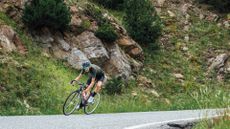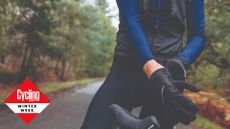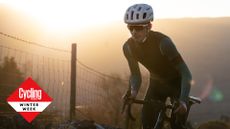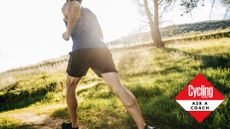7 benefits of riding outdoors - which you’ll miss out on if you train inside all winter
As with most things in life, there is a balance to be struck…
- (opens in new tab)
- (opens in new tab)
- (opens in new tab)
- Sign up to our newsletter Newsletter
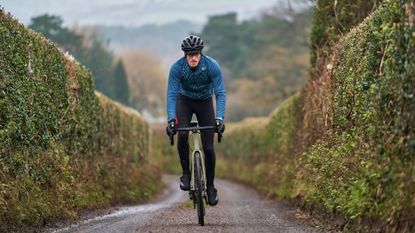

As the winter weather drags on, many of us will be considering whether we should be spending more of our time on the turbo. It’s cosier for a start, you don’t need to worry about when the sun sets and there’s no need to clean your bike afterwards.
Are there any reasons why we should instead be staying out on the roads? The short answer is: yes, there’s more than several reasons why you might be better off embracing the elements and heading outside. The long answer? Well, all that is just below…
1. Varying pace/intensities
Although riding indoors can be great for keeping a consistent effort, it’s not a perfect analogue for riding on real roads. When we ride outdoors we experience resistance in the form of rolling resistance, air resistance, and gravity. With indoor cycling we only experience rolling resistance.
For any events we do outdoors, for the most part they will include a lot of variability in our pacing, and riding purely indoors can dull our capacity to deal with that varying pacing for longer periods of time. In short, if your events and goals of the year are outdoors, it is important to maintain your outdoor riding.
2. Riding up gradients
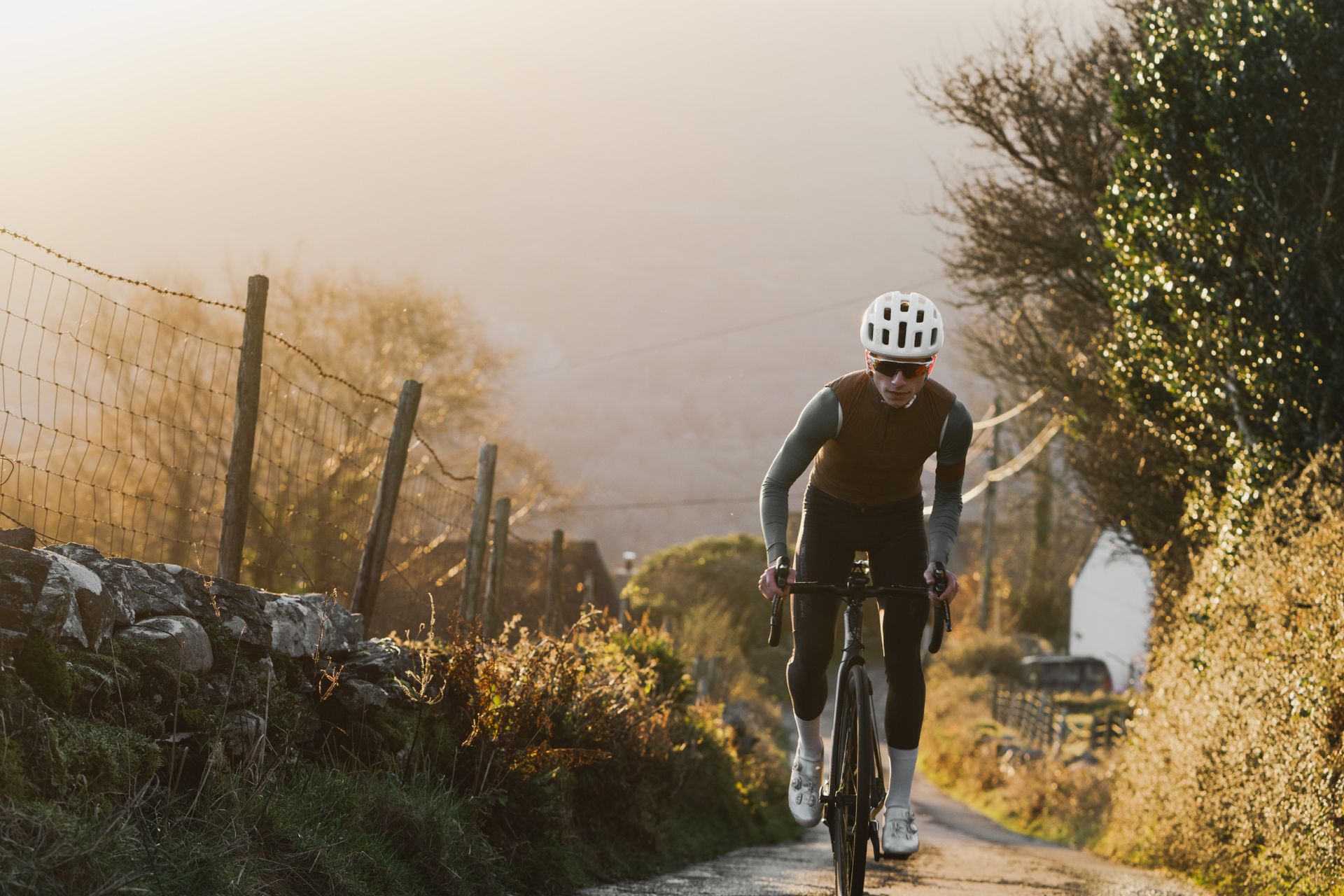
As part of a scientific study I conducted on how gradient affects muscle activation during the pedal stroke I found that as the gradient steepens, so too does the activation of several locomotor muscles in the legs. The study was done using an indoor gradient simulator - a Wahoo Kickr Climb, but the Elite Rizer is another option - whilst riding at a sweetspot level of intensity.
Essentially, what can be suggested from the study is that riding up the gradients most often experienced outdoors does significantly change the way our muscles work during the pedal stroke. This is important if any events or goals that you are targeting include climbs as part of the challenge. In that case, make sure to include regular riding up climbs within your training plan - it’s much easier (and cheaper) to do this by riding outdoors than buying a gradient simulator for indoors.
3. Bike handling
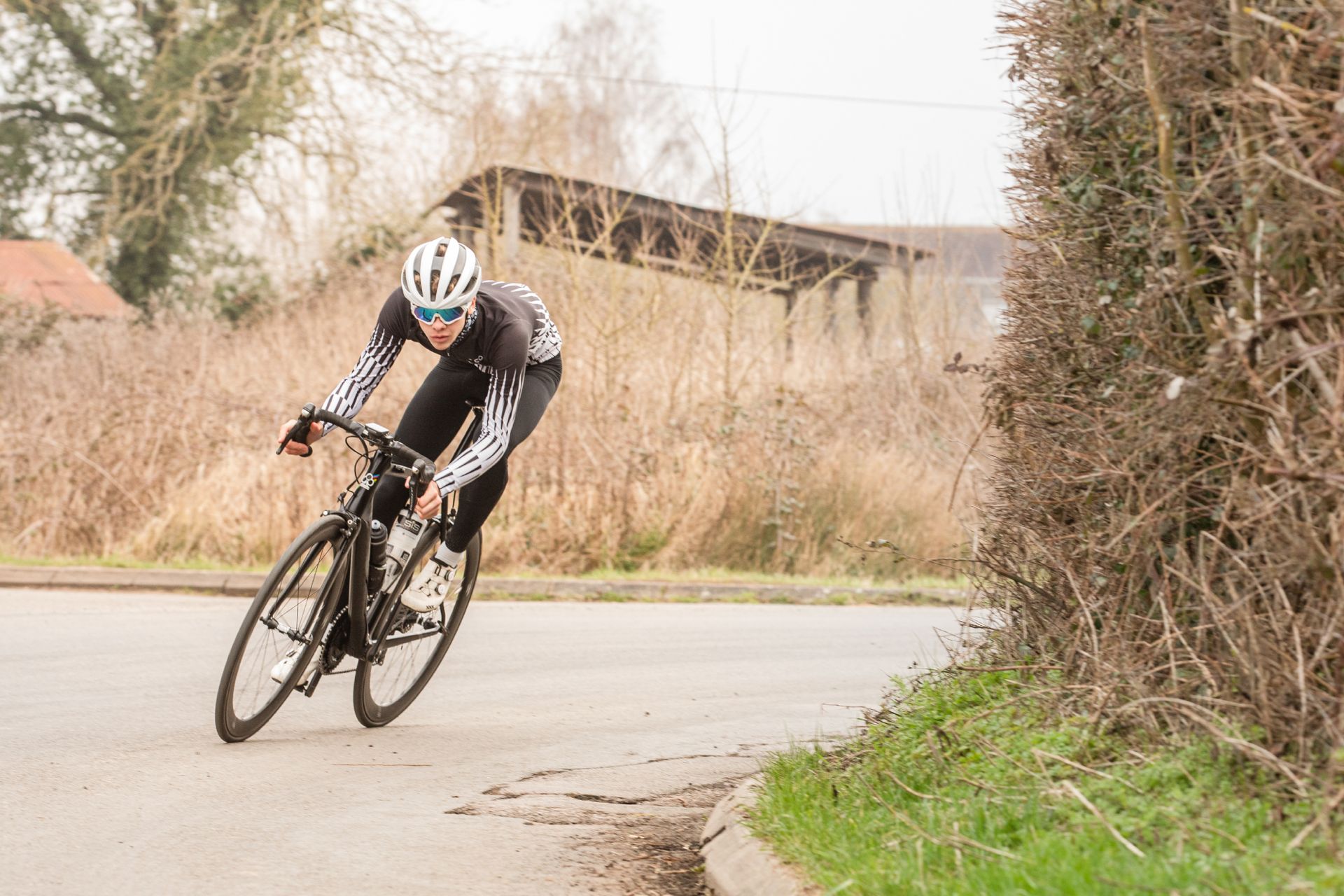
We can get most of the physiological training benefits when riding indoors - what we really miss out on are technical skills. Even something as simple as clipping in and out of the pedals - although you do get to practise that to some extent on the turbo or bike rollers, it's still a quite different ball game when actually needing to clip in and out quickly at junctions.
Cornering and bunch handling are also essential skills for cycling that can only be learned when riding outdoors (and in the velodrome), not on the turbo. You get more proficient at these skills the more that you practise them. So, spending time out on the road getting your cornering dialled in, or getting better at saving energy while riding in the wheels, are both vital skills for pretty much every cycling event or goal.
4. Being outdoors

We know from multiple studies that exercise is good for our mental health (like all things, in moderation). It helps boost our mood with the release of endorphins and it also reduces anxiety. But being outdoors also brings its own heap of benefits as well.
Even in the winter months, there is still the exposure to the sun. It’s true we don’t get as much during the winter, as we are wrapped up, and that there’s fewer hours of daylight - but we still need vitamin D and being exposed to sunlight can also help against Seasonal Affective Disorder (SAD).
5. Social aspects

Although we can use Discord when riding indoors (as I did with teammates during the lockdown) it doesn’t quite have the same impact as being sociable with people in real life. Humans are social animals and it’s good for our mental health to spend time with other people and our friends.
Group rides offer a perfect opportunity to share some banter, as well as learn new skills and get advice such as how to adjust an awkward derailleur or how to get a tubeless tire off a rim without the need for a fleet of tire levers!
6. Resistance to weather
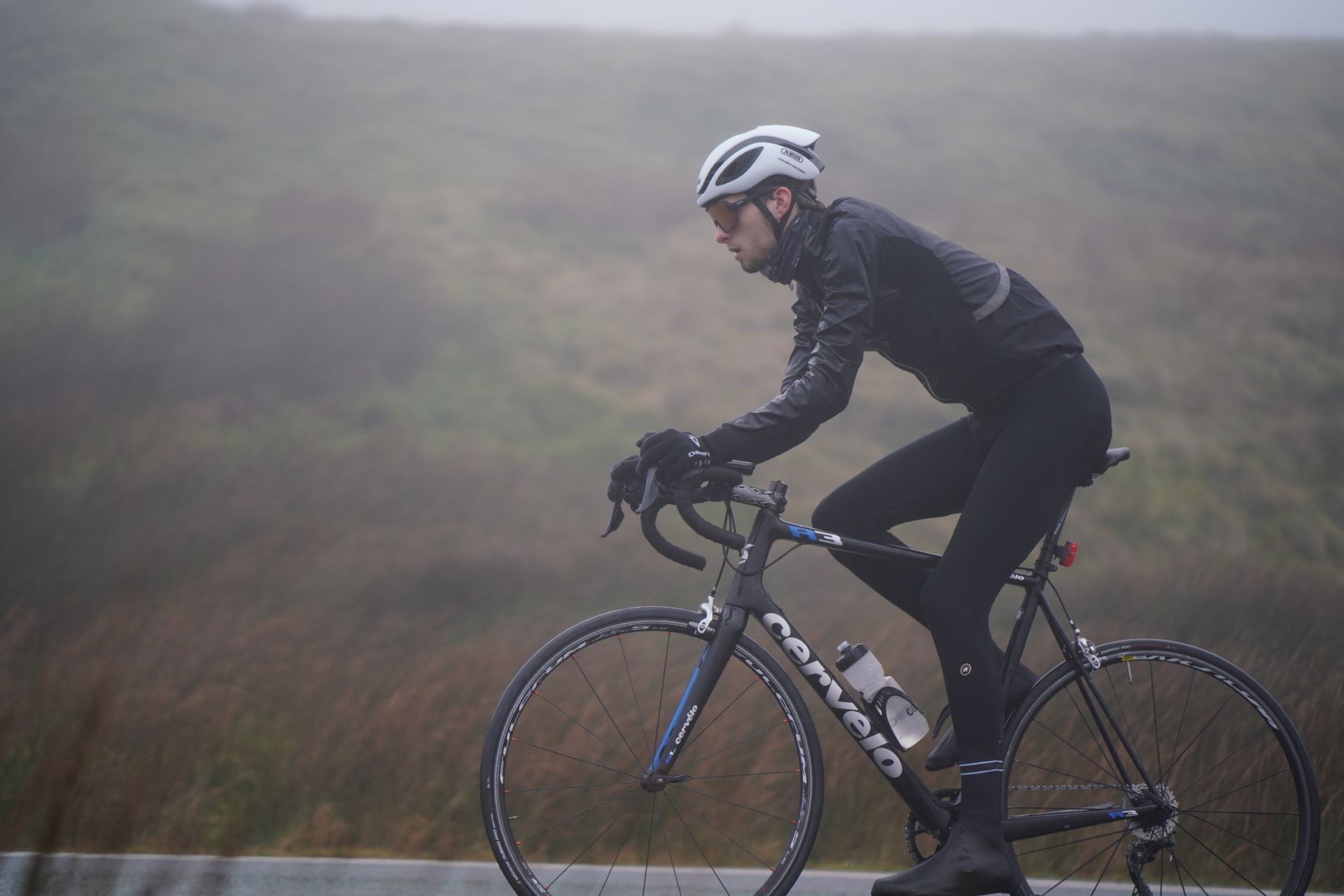
Given that for those of us in the northern hemisphere, we often encounter pretty foul and miserable conditions to ride in - even during the summer months, at times - it is vital that we are resilient to the bad weather. There’s the practical side of knowing what kit we need to wear in certain conditions, too. There have been several occasions where I’ve under or over dressed for events and it’s been a nightmare!
Then there’s also just the mental element of it. If we see a key event - or even a cycling holiday - is going to be afflicted by cold or rain, we want to be able to go into it with the attitude that we can deal with riding in the rain, for example, and that it doesn’t phase us. The negative mindset that can come from being unprepared will almost certainly impact performance and enjoyment. Even some of the foulest days on the bike can be fun! Albeit perhaps in more of a ‘type 2’ kind of way…
Here you can find our guide to the best winter cycling clothing to make things more bearable.
7. Increased volume
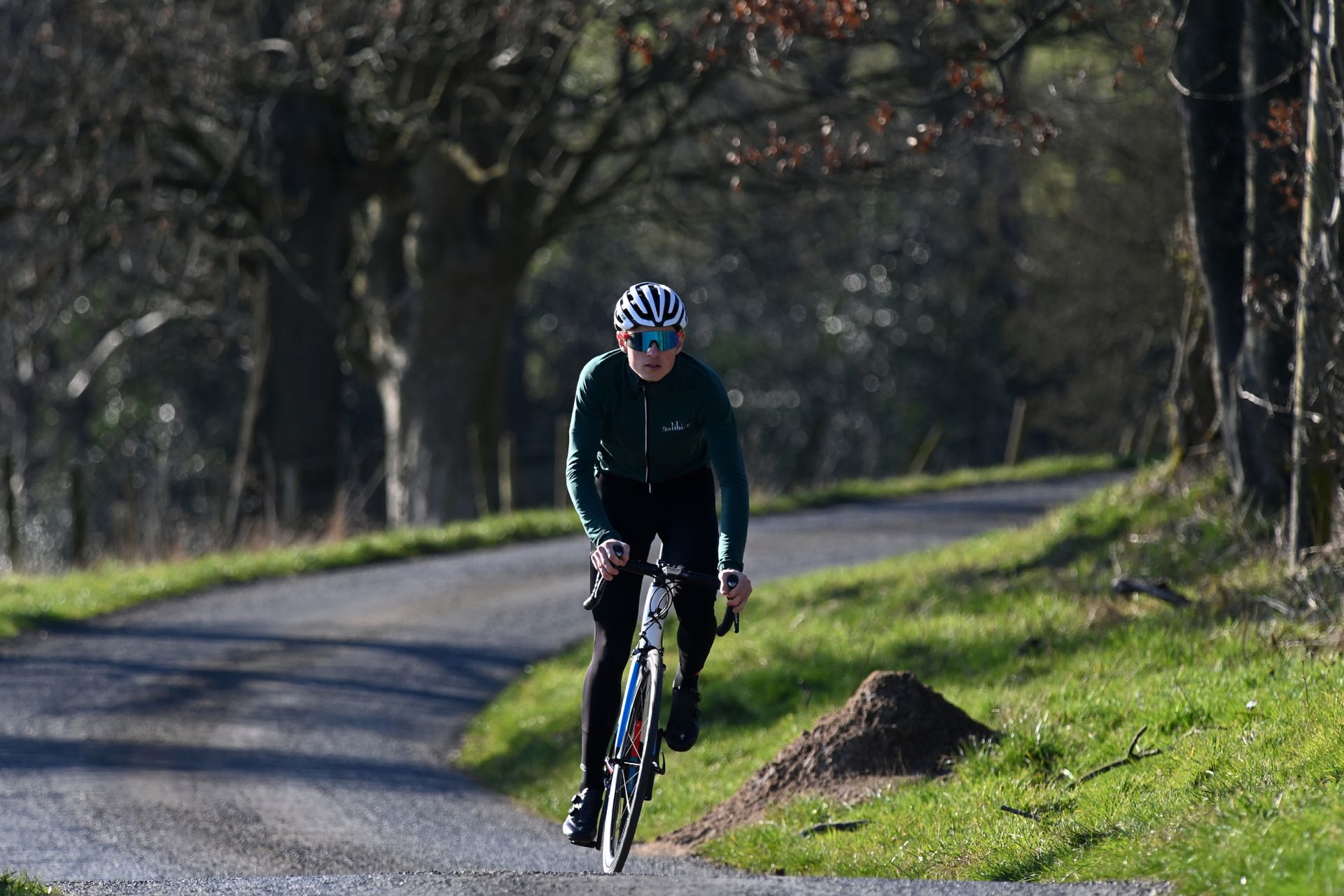
Although interval and high intensity interval training (HIIT workouts) are both beneficial for aerobic fitness and overall health, long slow duration (LSD) training has still been proven time and again to be essential when it comes to building fitness and becoming a better, faster rider.
We don’t all have the time available to train like the pros, but we often have some time at the weekends to do some longer Zone 2 endurance rides. Doing these on the turbo can be mind-numbing, I’ve managed a few 4 hour rides indoors when it was icy but I would rather ride for 4 hours in rain and gales! Each to their own, but for the most part you can more happily manage LSD training outdoors rather than indoors.
Another benefit has more to do with cycling nutrition. Outdoors on the road you'll be able to practise fuelling strategies. If we’re doing longer events or rides it is vital that we practise what we’re going to consume during training. Let’s say we have a 100 mile ride in 5 hours as a target. We’re going to need to eat a fair bit during that ride. We can test the grams of carbs per hour that we consume during training and, although we may not need to ride the full 100 miles, it’s still helpful to do some either slower four hour rides or shorter (still 2-3 hours) ones at the pace we want to target.
We’d have to do quite high volume on the turbo to practise this fuelling strategy. Also, it’s warmer on the turbo generally, so the rate at which we use carbs and fats will be different, as well as hydration/sweat rate.

Thank you for reading 10 articles this month* Join now for unlimited access
Enjoy your first month for just £1 / $1 / €1
*Read 5 free articles per month without a subscription

Join now for unlimited access
Try first month for just £1 / $1 / €1
Andy is a Sport & Exercise Scientist, fully qualified and experienced cycling coach, personal trainer and gym instructor. He spent 3 years on the road riding for a UCI cycling team and 7 years as a BC Elite rider.
After graduating in 2020 with first-class honours in his Sport & Exercise Sciences BSc, he continued to pursue his interest in research in the field of sport science alongside setting up his coaching business, ATP Performance, and working for USA-based firm, Wahoo Sports Science. He balanced this with racing at international level, competing in prestigious events such as the Tour of Britain and the Volta a Portugal.
-
-
 Summit finish and final day time-trial for 2024 Tour de France finale in Nice
Summit finish and final day time-trial for 2024 Tour de France finale in NiceStage 20 will finish atop the Col de la Couillole before final day race against the clock in Nice
By Tom Thewlis • Published
-
 Closing the gap: David Gaudu emerges from Paris-Nice more confident than ever before
Closing the gap: David Gaudu emerges from Paris-Nice more confident than ever beforeThe Groupama-FDJ rider finished second overall at the Race to the Sun, but gained more than just the result
By Adam Becket • Published
-
 Everything you need to know about lactate: your burning questions answered by an exercise physiologist
Everything you need to know about lactate: your burning questions answered by an exercise physiologistFar from being an acidic waste product that makes your muscles burn, lactate is actually a vital source of energy. An exercise physiologist debunks the mistruths around the metabolite
By Tom Epton • Published
-
 Struggling on steep hills? New study finds dietary nitrate - as found in beetroots - helps to improve muscle torque
Struggling on steep hills? New study finds dietary nitrate - as found in beetroots - helps to improve muscle torqueAlready widely held as a ‘superfood’, could this be yet another string to the beetroot’s bow?
By Anna Marie Abram • Published
-
 Time to rethink your cycling goals? Here's how to set sustainable targets for the year ahead
Time to rethink your cycling goals? Here's how to set sustainable targets for the year aheadWe take you through a full spectrum of cycling goals - from fitness to sociability to adventuring - and how to chose one that will work for you
By Andy Turner • Published
-
 Winter fueling: how to match your cycling nutrition to the demands of cold weather riding
Winter fueling: how to match your cycling nutrition to the demands of cold weather ridingGetting the most out of your winter training means making sure you are optimally fuelled for every ride - here's what you need to know about the specific demands of cold season nutrition
By Joe Laverick • Published
-
 Get the best from a foam roller: exercises for cyclists
Get the best from a foam roller: exercises for cyclistsFoam rolling can aid recovery and stave off injury, we outline what muscle groups to focus on and how to ensure you’re reaping the benefits
By Nicole Oh • Last updated
-
 Suffering from numb feet or hands when cycling? Here's how to combat the cold
Suffering from numb feet or hands when cycling? Here's how to combat the coldYour extremities are the first to suffer when the temperture drops. Here's how to avoid painfully cold hands and feet
By Michelle Arthurs-Brennan • Last updated
-
 How to handle winter like a cyclist: your step-by-step guide
How to handle winter like a cyclist: your step-by-step guideThe season of weight training and nutritional debauchery is here
By Michelle Arthurs-Brennan • Published
-
 Ask a cycling coach: ‘If I can’t go on a bike ride, is it worth going running instead?’
Ask a cycling coach: ‘If I can’t go on a bike ride, is it worth going running instead?’Whether it’s a busy work/life schedule, a trip away from home or the dark winter evenings, there’s a host of reasons why fitting in a ride might be a struggle – but how good an alternative is running, really?
By James Spragg • Published




